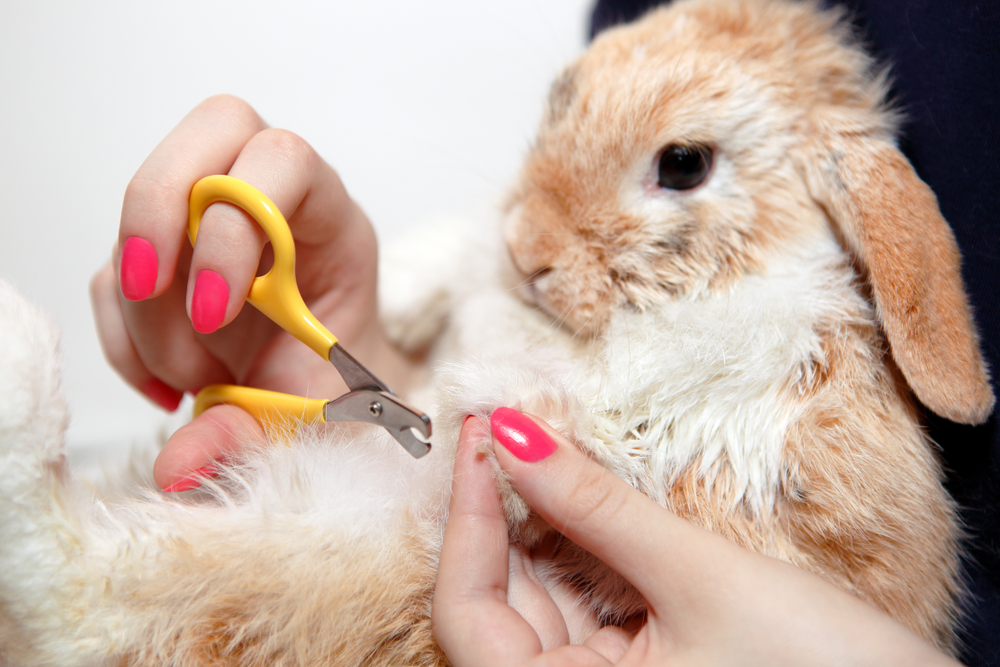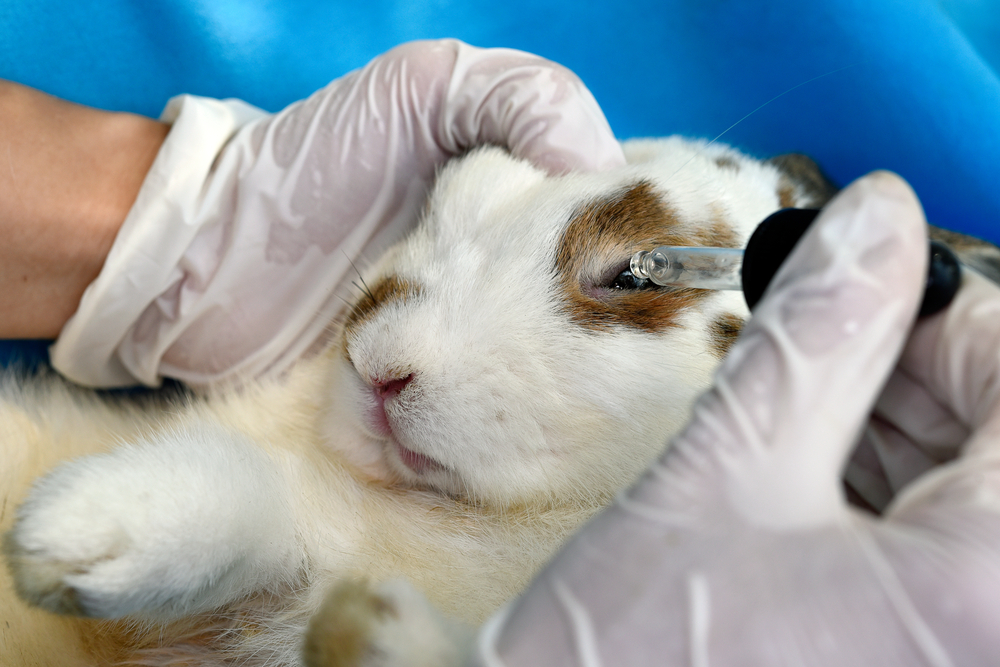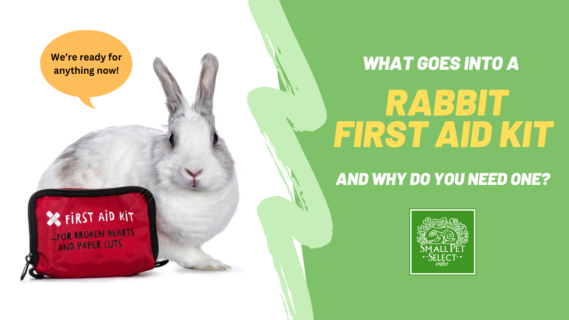The best way to handle emergencies is to handle them before they happen… we’re talking about being prepared rabbit parents! With proper preparation, you can get your rabbit the care they need quickly and hopefully without making anything worse. A rabbit first aid kit puts everything you need in one place!
What Goes In A Rabbit First Aid Kit?
A rabbit first aid kit isn’t that different from a human first aid kit. You need to be ready for a lot of the same problems! There are definitely some additional products that help make rabbit care easier in times of stress and some things that are good to have on hand when working with a vet over the phone.
There are small things you can do to help the situation prior to getting your rabbit to the vet and for that, we have a rabbit first aid kit!
Your Exotic Vet’s Phone Number
There’s no substitute for a professional. In situations where your rabbit is showing signs of illness you need to contact an exotic vet. A vet can also give you instructions in any situation here you aren’t sure what actions to take.
An emergency is not the time to research local veterinarians. Pick out an exotic vet before there is an emergency and have their contact information in your rabbit first aid kit.
Nail Clippers
While nails that need to be clipped aren’t an emergency, accidental bleeding while clipping your rabbit's nails is common so it’s good to have the nail clippers close to the products that will help with any bleeding.

Styptic Powder
Styptic powder can be used if you accidentally clip your rabbit’s nail too close to the quik. This is the only situation where you should use styptic powder for bleeding. Don’t apply it to an open wound anywhere else on the body.
After putting the powder on your rabbit's toe, stay with them to make sure they don’t lick or ingest any of it. Corn starch can also be used as an alternative to styptic powder in your rabbit first aid kit.
Cotton Pads and Bandages
Cotton pads of different sizes are great to have on hand if you ever need to clean a wound. Self-adhesive bandages are what you need for pets as you don’t want them to stick to your bunny’s fur. Bandages that stick to themselves will remain comfortable for your rabbit.

Antimicrobial Solution
You can get a pet-safe antimicrobial solution at most pet stores. Hydrogen peroxide mixed with water can also work (¼ of a cup of hydrogen peroxide mixed with 2.5 cups of water). You can apply these solutions with a cotton pad or spray them on.
Nutri-Rescue
Nutri-Rescue is a remedy used when a rabbit stops eating to keep their digestive system from completely stopping. It’s a tool to fight against G.I. Stasis. Talk to your vet about this product and add it to your rabbit first aid kit!
G.I. Stasis is a serious condition where the muscles in a rabbit's stomach and intestines aren’t contracting the way they need to in order to move food through the digestive system. This can be a secondary condition that occurs when a rabbit isn’t feeling well from illness or an injury. It can also occur when they aren’t fed a proper diet.
Nutri-Recovery is a remedy used for long-term use after a rabbit recovers from G.I. stasis and digestive issues. Check with your vet if you have a bun with ongoing digestive issues!
Thermometer and Vaseline
Taking your rabbit’s temperature at home can give you some good information to give your vet when you call. The only way to get an accurate reading is to take it rectally. Use Vaseline on the thermometer for lube. A temperature between 101.5ºF and 103.5ºF is normal for rabbits.
Heating Pad
If your rabbit’s temperature is below normal you can use a heating pad to help them warm up. Make sure they have the space to move away from the heating pad if they want to. A vet will often try to raise a rabbit’s temperature and having some tools at home can be helpful. After calling your vet they may instruct you to use the heating pad before you are able to get into the vet’s office.
Make sure the cord is out of reach of your rabbit or that your rabbit isn’t using the heating pad without supervision.
Hand Sanitizer
This is for you of course! Especially if there is an open wound you need to make sure you aren’t introducing germs and bacteria to your bun. Keep your hands clean!
Eye Wash and Eye Dropper
Eye wash or a saline solution can be used to clean out your rabbit’s eyes. Use an eyedropper to flush the eye. If you find that your rabbit frequently has gunk in their eye then this is something that needs to be checked out with your vet!

Prevention Goes With Preparation
Prevention is the best strategy when it comes to keeping your rabbit healthy. Regular vet check-ups will spotlight any concerns before they become an issue. Appointments give you an opportunity to ask questions and fine-tune your rabbit care routine.
Feeding a proper high-fiber diet full of high-quality hay goes a long way in preventing illness and keeping your rabbit’s teeth and digestive system healthy.
Providing a rabbit-safe environment with opportunities for exercise needs to be a daily goal to prevent accidents. There is a lot you can do as a rabbit owner to keep your rabbit safe and healthy. For situations out of your control, you can be ready with a rabbit first aid kit and a rabbit-savvy vet to help guide you through emergencies.
We are not veterinarians, and none of our information should be construed as veterinary advice.
Before adding any new product, please consult your exotic veterinarian. If your pet is acting unwell and you have concerns for their well being, please contact your vet immediately.





